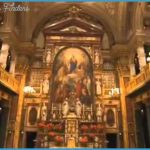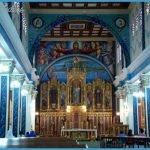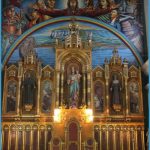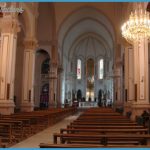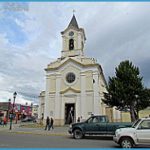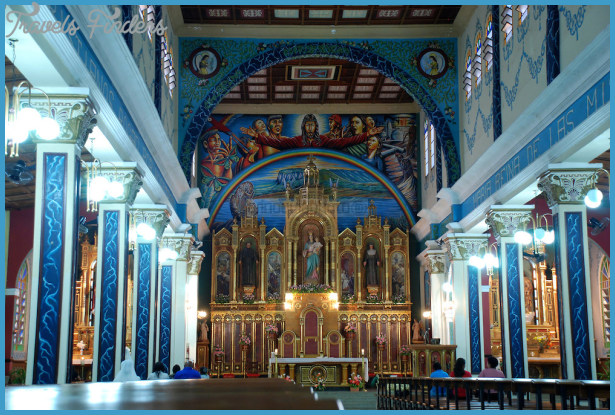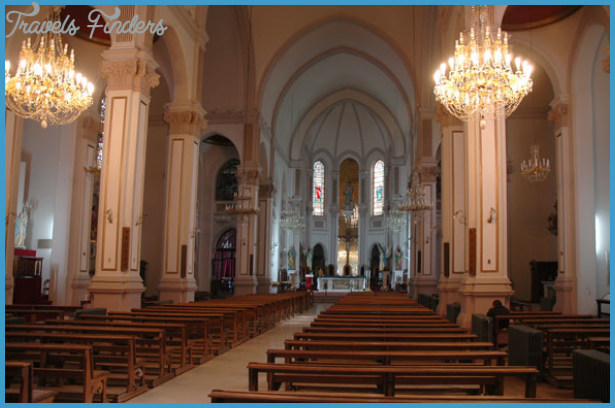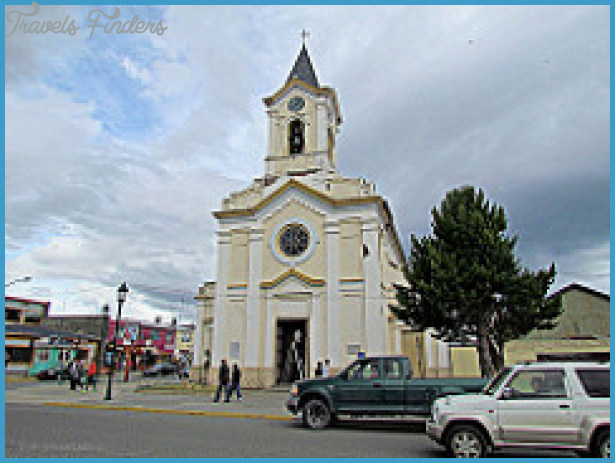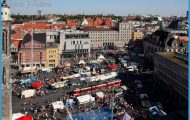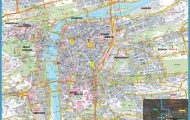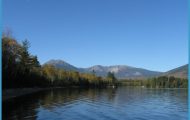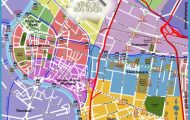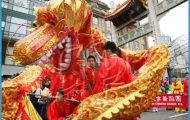Fuerte Olimpo’s main church is impressive in both its construction and surroundings. The large, stone church features two bell towers housing Italian church bells and a large German clock. The spacious stone plaza in front of the Catedral de Maria Auxiliadora acts as a terrace overlooking the river. For a view from even higher up, you can walk up the bell tower, stopping to visit the small Indigenous Museum located on the second floor. The museum features artifacts and photographs of the daily life and traditions of nearby indigenous communities. To get to the church walk upriver along Virgen Maria Auxiliadora street (the main paved road running parallel to the river) to the pretty stone walkway leading a short distance uphill. If the entrance to the museum is locked, inquire in the church or with the priest whose office and living quarters are located along the right-hand side of the church.
Fuerte Borbon
Fuerte Borbon was constructed by the Spanish in 1792 in order to protect this remote area from incursions by Portuguese bandeirantes. The Spanish also found themselves fighting local Mbya indigenous tribes understandably resistant to their presence. After independence Paraguay’s first leader, Dr. Francia, renamed the fort and surrounding areas Fuerte Olimpo as a symbol of Paraguay’s severed ties with Spain. Wariness of neighbors to the east continued past Paraguay’s declaration of independence, and in 1817, the fort was rebuilt and fortified. Remnants of the stone fort include the outer walls and a small lookout tower. The fort offers a nice view of a sheltered bay where you can
see wildlife as well as local families fishing. Unfortunately, there is no sign explaining the fort’s historical significance. To get there head upriver from the docks along the paved double avenue Calle Fuerte Borbon or the retaining wall. The steps up to Fuerte Borbon are located just after passing the Gobernacion building and the local hospital.
Dealing with the Tuju
Mud, or tuju as it is called in Guarani, is a major factor of life for people in the Paraguayan Chaco. Alto Paraguay’s clay and silt ground quickly turns to mush during a rainfall. This can spell disaster for anyone planning on traveling through Alto Paraguay in a vehicle. Don’t risk it during the rainy season, or you may end up stuck. Even walking short distances can be complicated – remember, there’s no sturdy sidewalk to provide stable ground. Make sure to wear shoes with traction, walk slowly, and realize that at some point you will probably end up flat on your rear end in the mud. Just chalk it up to a Chaco merit badge and move on.
Cerro Tres Hermanos Look Out Point
The best view of the area is undoubtedly obtained by ascending the 500 plus step walkway on the middle of the three hills or cerros. From the lookout point on top you can see the Pantanal as it stretches for miles and miles across Paraguay to the east and Brazil to the west. The lack of infrastructure in sight gives you a good idea of how remote and lush the province of Alto Paraguay can be. Bring lots of mosquito repellant and water and avoid the mid-day heat. To get to the path walk inland one block from the docks and then head about 300 meters downriver before taking your first left and head to the end of the block. The entrance to the walking path is not clearly marked so it is best to ask someone for directions to el mirador or la antenna de COPACO.
Nature Trips
There are small boats and local guides available to lead day trips along the river entering into smaller tributaries to observe flora and fauna. Expect to pay between Gs. 300,000 to 600,000 depending on the size of your group and boat. Make sure to double check whether you’ll need to bring own food, and if you want to fish, ask about supplies. Inquire with Alcides Gallagher at the Tourism Information Office or Hotel AA or with Juan Batista de Leon at the Gobernacion’s tourism office.
Lodging
Hotel Chaco Pantanal Located about four blocks from the docks at the base of one of the three cerros, Hotel Chaco Pantanal has clean and comfortable accommodations. There is a choice of rooms with a fan or air conditioning. Owner, Asuncena Gallagher, is very friendly. Tel: 0497 281 021, 0981 267 457, from the docks head towards the Municipal Office, and continue one block past the end of the triangular Plaza Municipal. The hotel is on the right-hand side of the road. Gs. 35,000 per person for rooms with fan, Single Gs. 80,000 with A/C, Double Gs. 120,000 with A/C. A/C, fan
Hotel AA Overlooking the river, Hotel AA is the most scenic option in town, although not the most comfortable. Rooms are a little cramped with an assortment of bunk beds and queens. Each has a private bathroom, fan, screened in windows, and a screen door. All open out on to the nice wraparound deck with a great view. Hotel AA is well known for its locally caught fish dishes (other meals can be requested as well), though the kitchen’s cleanliness leaves much to be desired. Tel: 0497 281 017, The hotel is visible from the dock, but the entrance is around the bend. Leaving the dock take a right past the large oil drums, and continue till the end of the block. Take another right, and walk to the side entrance down a small walkway between two
buildings, Gs. 40,000 per person, fan The Ishir
Throughout their history, the Ishir tribe (also known as the Chamacoco) has lived along the banks of the Paraguay river. With deep cocoa complexions, the Ishir have a look that is very distinctive from the majority of Paraguay’s indigenous groups. The Ishir tribe is known by outsiders for their large ceremonial feather head and neck pieces, body painting, as well as decorative bags made of caraguata plant fibers. Ogwa, an Ishir shaman born in Bahia Negra, is perhaps the most well-known indigenous artist in Paraguay. His line drawings and paintings depict the natural world in which the Ishir survive as well as Ishir myths and legends. His works are on display in the Museo del Barro and silkscreened onto tote bags and t-shirts in Overall Artesanias, both in Asuncion. This tribe has been studied extensively by anthropologist Ticio Escobar (www.ticioescobar.com/) whose works include The Curse of Nemur In Search of the Art, Myth, and Ritual of the Ishir and by musicologist and anthropologist Guillermo Mito Sequera whose works include Tomardho: La Resistencia Anticipada. The Museo Andres Barbero and Museo del Barro in Asuncion and the Museo Guido Boggiani in San Lorenzo have good displays about the Ishir tribe.
Food
Autoservice La Olimpena This decent sized store is a good choice for stocking up on basics. The owners are very friendly and interesting to talk to as they used to operate a market river boat which sunk a number of years ago (there is a painting of it on the wall above the cash register). The house diagonally opposite the double avenue sometimes sells meat empanadas and cake. Tel: 0497 281 059, Aviadores del Chaco and General Caballero, Mon-Sun 7am-12pm, 3pm-9pm

